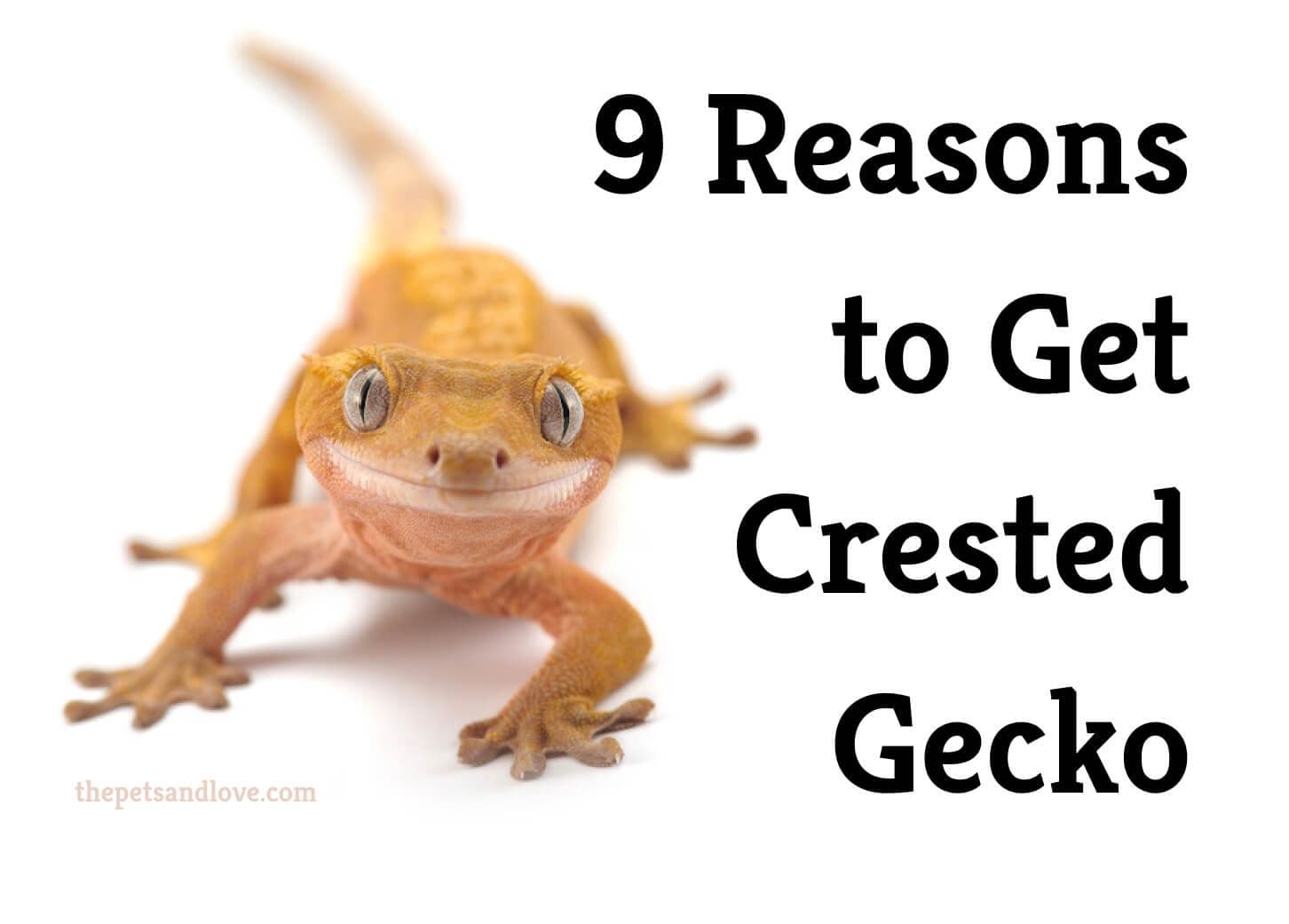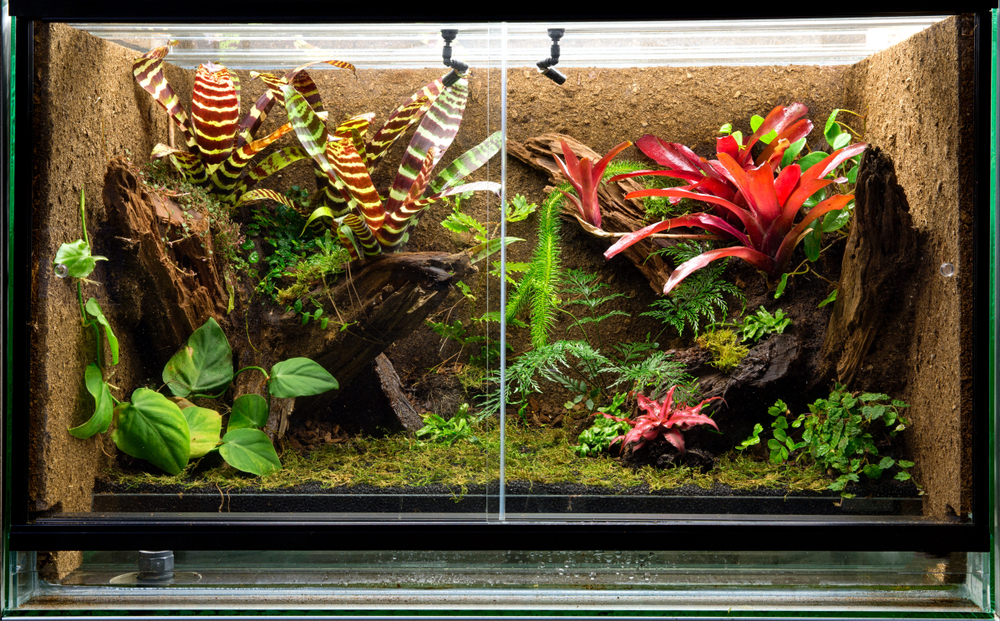Why You Should Consider a Crested Gecko as Your Next Pet

If you want a nice and safe beginner-friendly reptile to look after but you don’t want something that’s too small, the crested gecko is probably the best pet for you.
Easy to take care of and very interactive, “cresties”, as we call them, can bring a lot of joy to your home. So, here are the 9 benefits of being a crestie owner and some tips for how to keep your crestie happy.
9 reason why owning a crested gecko is awesome
These awesome reptiles can bring a lot of good vibes to any home and are very unique in quite a few ways:
1. Crested geckos are phenomenal climbers
As an arboreal species, cresties love to climb. They have special padded toes that allow them to make even Spider-man look like a boring pedestrian!
2. This species of gecko fares from the New Caledonia islands and was once thought to be extinct
Cresties are a very special pet but they are also unique in that they were believed to be extinct on their homes islands of New Caledonia for a while. This makes it very important to always buy captive-bred geckos and not wild-caught ones. Plus, it ups their coolness factor as it makes them even more special.
3. They have double-jointed legs which makes them look awesome
Cresties have a very unique look thanks to their double-jointed legs. This allows them to climb better as well as to assume some very weird and amusing positions.
4. Crested geckos come in nearly infinite color and pattern variations – each one is truly unique
Another factor that’d literally make your gecko even more unique is that cresties come in myriad different color patterns and morphs. This gives you the freedom to always find a truly special reptile pet that’s sure to catch your guests’ eyes.
5. They are also called “eyelash geckos” because of the cute ridges above their eyes
Cresties don’t technically have eyelashes – that’s why they need to lick their eyes to keep them clean and moisturized. However, they have these awesome horn-like ridges just above their eyes that make them look even cooler and have brought them the nickname “eyelash geckos”.
6. These geckos can live up to 20 years
Cresties can live up to two decades with the right care – more than most cats and dogs! This is great compared to many other pet reptiles that barely reach 10 years.
7. Crested geckos are quite talkative – you won’t be getting a silent and boring pet with them
Cresties are pretty noisy for a reptile, especially during their mating season. They can also bark sometimes, particularly when they are distraught or excited. This is pretty interesting and makes them even more interactive. Although, you probably shouldn’t put their terrarium in your bedroom as they are also nocturnal.
8. These reptiles actually change their skin color depending on their emotions
While they are not quite up to the chameleons’ level, cresties can change their color based on their environment or emotional state. This is usually called “Being fired up”. When they are asleep – or when they’re “fired down” – they turn into a darker hue but when they are awake they can alternate between dozens of colors and hues.
9. This type of gecko is very calm and social – perfect if you want to interact with your pet
Unlike some reptiles that really shouldn’t be handled too often, cresties love to be held and to walk on your arms and legs. Some basic socialization is still good, of course, as it’s shown in this Leopard Gecko video.
Other good tips are to always handle your gecko sitting on the floor so you don’t drop him from too high up and not to bother him during the day.
Also, if you have kids, make sure to instruct them to be gentle. But aside from that, as long as you show your crestie love and affection, he will love to interact with you which is awesome for a reptile!
Several key points to know before getting a crested gecko
Cresties are indeed awesome but you should keep some things in mind before getting one:
Crested geckos shed their skin very often
More so than other lizards, cresties shed very often – once a week when they are young and once a month when they are older. This shouldn’t concern you but just keep it in mind. Don’t try to help them by hand as you may hurt the gecko – at most, put a shallow plate with luke-warm water in the tank to help them bathe themselves and shed their skin more easily.
If they lose their tail, it’s lost forever
Like other geckos, cresties can also lose their tail as a survival tactic. Unlike most of them, however, cresties never grow it back. This isn’t that big of a deal – they can survive just fine without a tail, just make sure to keep them clean while the wound heals. But if you want a long-tailed lizard – don’t pull their tail and don’t scare them too much.
They are nocturnal
Cresties are active in the evening and at night so you shouldn’t bother them too much during the day. They need their beauty sleep so you’d do well to leave them be when the sun is out.
Crested geckos are solitary animals – don’t place two in the same terrarium!
Two females can sometimes cohabitate without incidents in an extra-large tank but not always. A male and female combo can also work, although – when it works out - that’d lead to the couple reproducing. Two males, however, should never be put together as they’d scratch their eyes out.
All in all, either stick to just one crested gecko or get additional terrariums for every new one.
This gecko is an omnivore and can eat lots of things.
You can feed your crested gecko with a variety of things – from live insects and worms, through fresh fruits, all the way to premix powder foods. And you don’t need to frown on the latter – there are some really good premix powder foods that can sustain your crested gecko just fine and give him a long and happy life.
That being said, we do recommend a live food diet for this reptile. The insects cresties usually prefer include locusts, snails, stick insects, blue-bottles, crickets, and roaches. They are also fans of wax-worms, calcium worms, butterworms, and silkworks. As for fruits, they love pears, mangos, grapes, bananas, apricots, figs, strawberries, and even watermelons.
In the wild, a crestie’s diet will usually consist of 70-80% insects, worms, and other prey, and 20-30% fruits, nuts, and seeds. So, if you want to avoid the premix powders, sticking to this 80/20 insects fruits ratio is a good way to feed your gecko.
As for a feeding schedule, a crestie of any age should generally eat every other night or 3-4 times a week.
What items and inventory do you need to get to take good care of your crested gecko?
Cresties are arboreal and are a bit larger than some other geckos. They are pretty adaptable but they still have some requirements if they are to be healthy and happy. Here’s what you’d need:
-
First and foremost, you’ll need a good and large terrarium for your crestie.
 Young ones can grow in a 10-gallon tank but for an adult crested gecko, you’ll need at least a 20-gallon tank, preferably 30+ gallons. You need the tank to be both tall and long too – long so you can maintain two separate temperature zones and tall as cresties love to limb.
Young ones can grow in a 10-gallon tank but for an adult crested gecko, you’ll need at least a 20-gallon tank, preferably 30+ gallons. You need the tank to be both tall and long too – long so you can maintain two separate temperature zones and tall as cresties love to limb. -
Get at least one thermometer to help you maintain the right temperature in your gecko’s terrarium. For this species, the ideal range is 22oC-24oC (72oF-75oF). Anything above 30.5oC (87oF) is definitely ill-advised. Ideally, you should get two thermometers and maintain a temperature gradient in your gecko’s tank – one side should be kept around 22oC ( 72oF) which is around room temperature anyway and the other – up to 29oC (85oF) with the help of a heating lamp.
-
To achieve the temperature ranges we’ve mentioned above you’ll need to get a basking heat lamp and/or a ceramic heat emitter. Something as simple as a mercury vapor bulb should suffice just fine.
-
UVB lights are a topic of contention for cresties. Overall, they are not 100% necessary as these geckos are nocturnal and can do fine without them. However, there are some health benefits to having a UVB light in the tank such as an improved immune system.
-
You’ll also need to get a hygrometer for your terrarium. Cresties need a nice balance of 50-60% relative humidity and a hygrometer can help you maintain that.
-
You should also add a humidity hide or a humidity box in your geck’s enclosure to further give the little guy ways to regulate his moisture levels. Take a look at this instructional video from Jessica’s Animal Friends.
-
The best substrates for your gecko’s enclosure are ones that promote good terrarium humidity and also help you spot-clean more easily. Some of the best options include green carpet and old newspapers, for more budgetary concerns, or coconut bedding (from coir and husk) and Cyprus mulch for a more luxurious terrarium. Bark, soil, wood shavings, and reprocessed paper are also valid choices. Orchid soil is a cool choice too.
-
You’d also want to get some nice decorative items and stuff for your crestie to climb on. The choices here and near-endless – from tree branches and rocks to ropes, and anything else. Check out this interesting video from Reptiliatus for some inspiration.




















